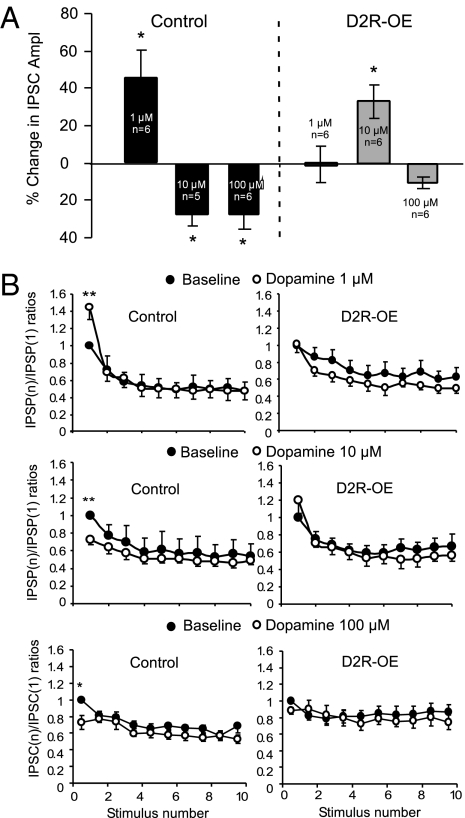Fig. 3.
D2R overexpression in the striatum results in reduction of the sensitivity to DA of GABAa receptor-mediated IPSC in layer V pyramidal neurons. The IPSCs were isolated in the presence of AP5 (50 μM) and NBQX (20 μM). (A) In control mice, DA induced distinctly bidirectional effects on evoked IPSCs, with significant enhancement at 1 μM but suppression at 10 μM and 100 μM (*P < 0.05). In contrast, in the D2R-OE mice, DA at 1 μM had almost no effect on evoked IPSCs (n = 6, P = 0.99) but significantly increased the amplitude by almost 40% at 10 μM (n = 6, *P < 0.05). When the concentration was increased to 100 μM, the IPSC amplitude decreased again but had no significance (n = 6, P = 0.06; ANOVA F = 21.1, P < 0.001). (B) The effects of DA on evoked IPSCs trains in control and mice that overexpressed D2 (n = 6 at each concentration, *P < 0.05). The IPSC currents elicited in the train were normalized to the amplitude of the first IPSC recorded in the baseline condition and were plotted against the stimulus numbers. These data show that DA significantly changed the amplitude of the IPSCs (*P < 0.05) but exhibited no clear effect on the ratios of the IPSCs elicited by repetitive pulses (i.e., IPSC2-10, P > 0.05), suggesting potential postsynaptic effects.

